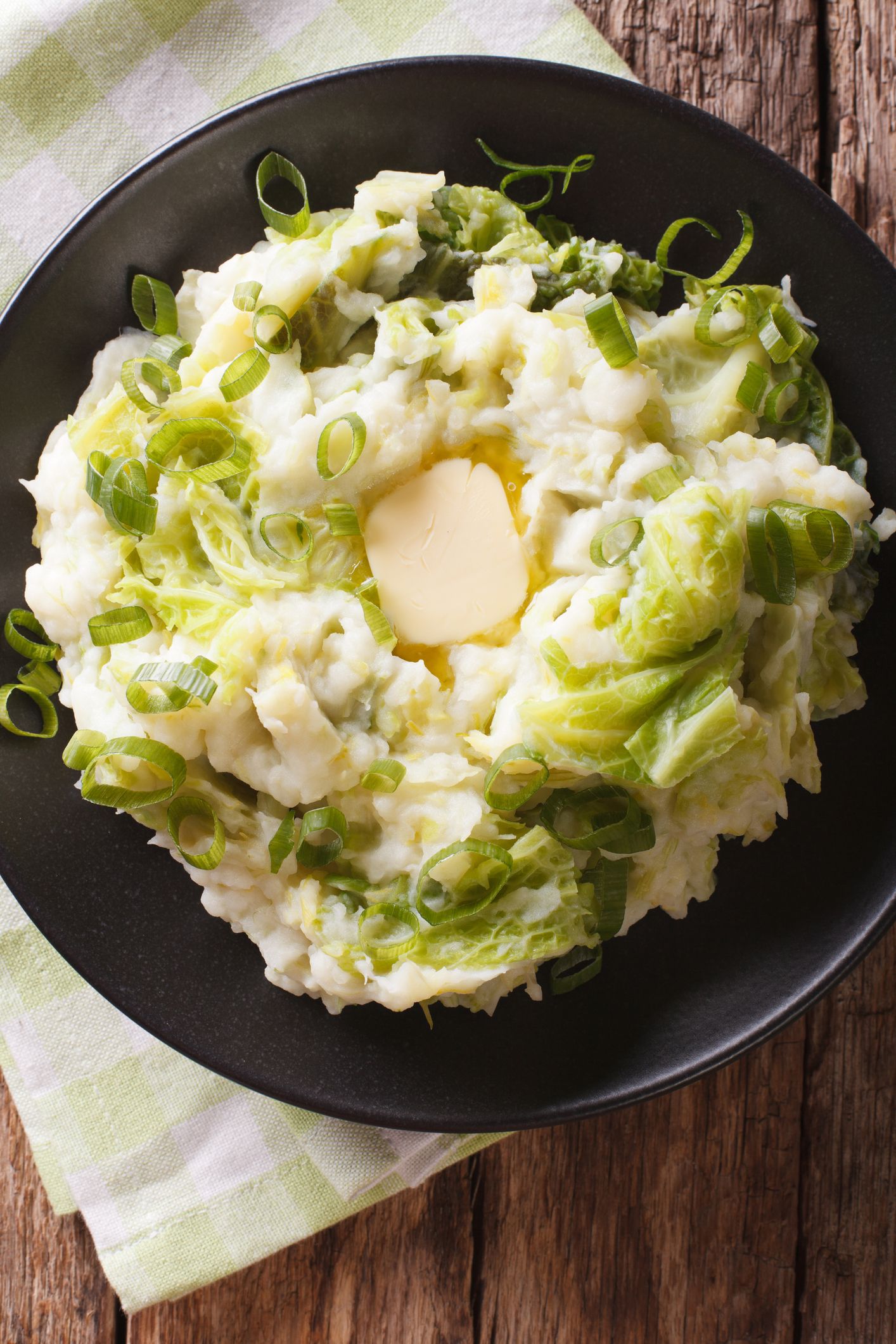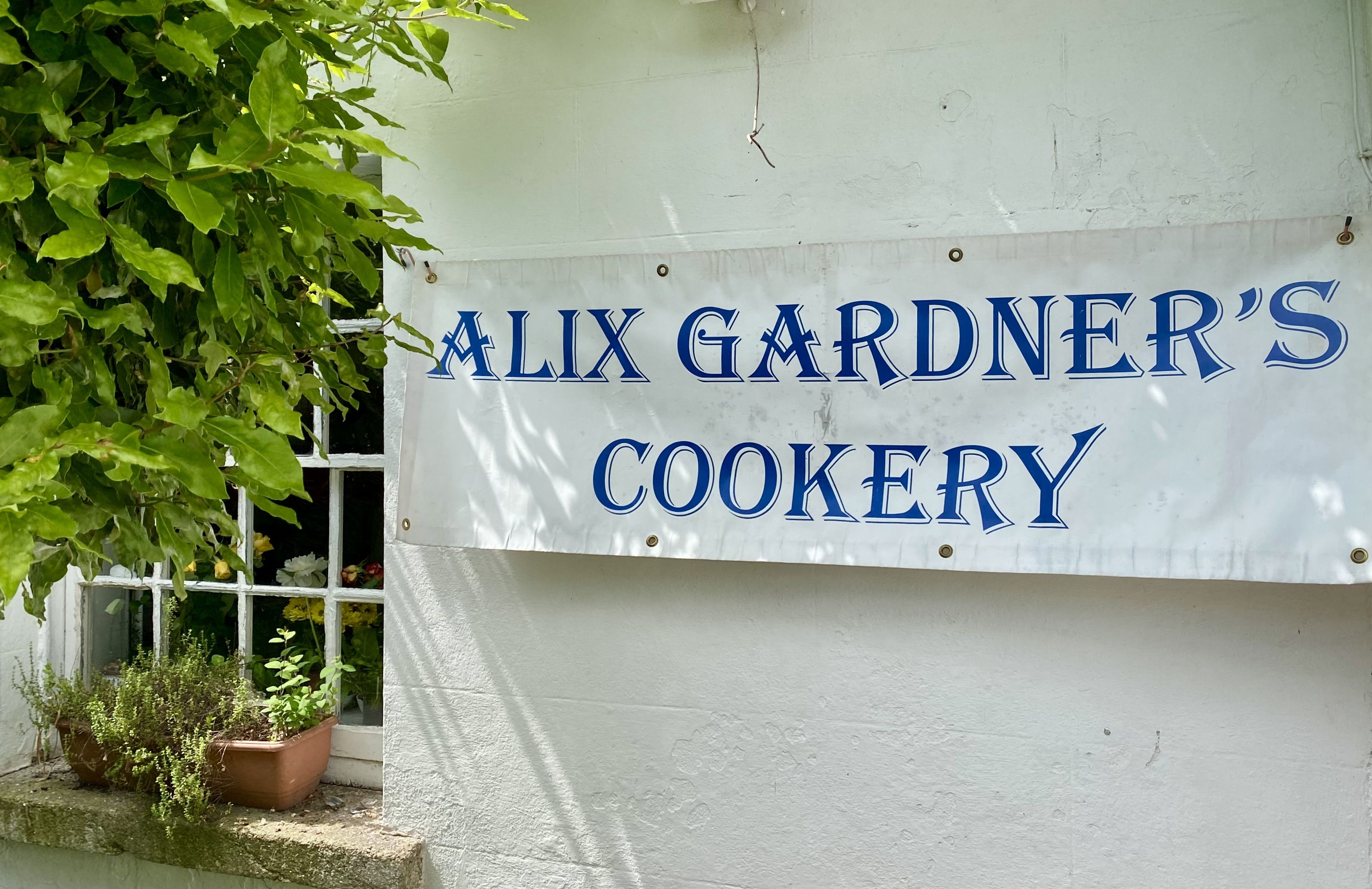Eurotoque chef Alix Gardiner set up her first practical cookery school in Ireland more than 30 years ago, and she’s taught more than 5000 students how to cook dishes ranging from Sticky Korean Chicken to Sticky Toffee Pudding. Classes are tailor-made to suit beginners, private groups, gals out for a hen party (bachelorette/bridal shower), or corporate team members coming together to build comraderie in the kitchen and, ultimately, in the workplace. All of her classes are from 45 minutes (for a simple bread or scone demonstration) to 2 1/2 hours (for lunch, dinner, or hands-on cooking).
I met Alix in early summer at the spacious Waterloo Road kitchen of her Georgian townhouse. A lovely herb garden lines the walkway up to the kitchen door and a plate of Vanilla Fork Biscuits sits in welcome on the table. As a visitor to Dublin, I was most interested in her classes geared to tourists, ones that include “The Country Kitchen in Dublin,” “Traditional Irish Cooking,” and “A Taste of Ireland” (full descriptions of each on dublincookery.com). With dishes like potato cakes, soda bread, and fruit crumble on the course description, who could resist?

Alix Gardner. [Photo courtesy of Dublin Cookery]
Over tea and biscuits, Alix told me how surprised visitors are that lots of authentic dishes, soda bread for example, are so quick and easy to make.
She said, “They also like the relaxed atmosphere of cooking in someone’s own kitchen [rather than in a formal/industrial one] and love the idea of cooking first and then sitting down here at the table and eating what they’ve made.” A bonus is that you might be joined, as I was, by Alix’s husband John Colclough, director of a bespoke tour company that’s led guests to the best places for more than 40 years (irelandandbritain.com).
Another surprise she told me about was when she was invited to a food festival in Hong Kong a few years ago where she was asked to bring “uniquely Irish foods.” Simplicity again, she said, “I brought floury potatoes, brown bread, and cooking apples. . .nothing exotic but uniquely Irish.” She shares some of these “classics” here. (dublincookery.com; 71 Waterloo Road; dublincookery@yahoo.com.
IRISH STEW
Serves 4 to 6
Visitors to Ireland want to know how to make this classic dish, and this recipe tops the list on the cookery school’s “Traditional Irish Foods” class. Alix says, “The potatoes should disintegrate while cooking to make a gravy,” and she recommends that you add a few extra potatoes for the last half hour of cooking time to have some that keep their shape.” You can also substitute whole best end chops for the lamb chunks, if you wish, and cook the stew in a 350 ºF oven instead of on a stovetop.
2 pounds lamb shoulder, trimmed and cut into 1-inch pieces
2 onions, peeled and roughly chopped
4 large carrots, peeled and roughly chopped
2 pounds floury potatoes, peeled and cut into 1/4-inch-thick slices, plus extra for last half hour of cooking
2 leeks, thoroughly washed and sliced
1 bay leaf
Salt
Ground black pepper
2 pints lamb, chicken, or vegetable stock
Fresh parsley, for garnish
1. In a large ovenproof casserole, layer the lamb and vegetables, sprinkling each layer with salt and pepper. Pour the stock over. Cover.
2. Cook over medium-low heat for about 60 minutes, skimming off any fat that comes to the top, then add additional potatoes. Continue to cook for 30 minutes longer, or until the potatoes are tender.
3. To serve, divide the stew into shallow bowls; sprinkle with parsley.

[Sergii Kuval | Dreamstime]
COLCANNON
Serves 4 to 6
This potato/cabbage dish is one of Ireland’s great side dishes, perfect with meat, poultry, and fish.
1 1/2 pounds floury potatoes, such as russet, peeled and cut into 1 1/2-inch pieces
1/2 pound green cabbage, cored and sliced (outer leaves discarded)
2 ounces butter
1/2 cup hot milk
4 to 5 sprigs parsley, chopped
Salt
Ground black pepper
1. In a large saucepan, cook the potatoes over medium heat for about 15 minutes, or until nearly tender. Drain and mash; add the butter.
2. In a separate saucepan, cook the cabbage over medium heat for about 10 minutes, or until tender. Drain. Add the cabbage to the potatoes, then add most of the hot milk (reserve some if needed for a smoother consistency), parsley, salt, and pepper. Beat until smooth, adding reserved milk, if necessary.
APPLE & BERRY CRUMBLE
Serves 4
Eating apples, cooking apples and cider apples are all grown in Ireland. Nowadays the variety most widely planted is the popular cooking apple, Bramley’s Seedling (Bramley for short), which is mainly grown in Armagh, Dublin, Louth, and Meath. American cooks will find Granny Smith, Fuji, and Winesap good substitutes for taste and texture.
2 pounds cooking apples, peeled, cored, and cut into thick slices
8 tablespoons sugar
2 tablespoons water
8 ounces blackberries, raspberries, or blueberries
1 1/2 cups flour
4 ounces butter, cut into cubes
Pinch of salt
1. Preheat the oven to 400ºF. Lightly butter a 1 1/2-quart ovenproof dish.
2. In a medium saucepan, combine the apples, 4 tablespoons of the sugar, and water over medium heat. Cook for 4 to 5 minutes, or until slightly tender (you don’t want the apples to become a purée). Transfer to the prepared dish. Arrange berries over the apples.
3. In a small bowl, combine the flour and butter. With your fingers, rub the butter and flour together until the mixture resembles coarse crumbs. Stir in the remaining 4 tablespoons of sugar. Sprinkle over the berries.
4. Bake the crumble for 30 minutes, or until the crumble is brown and the mixture is bubbling. Serve warm or at room temperature.
VANILLA FORK BISCUITS
Makes about 18
A plate of these homespun “biscuits” are always welcome in an Irish kitchen. I was pleased to find them when I visited Alix’s cookery school.
4 ounces butter, at room temperature
1/4 cup sugar
1/4 teaspoon vanilla extract
1 1/4 cups self-rising flour, sifted
Pinch of salt
Lemon or orange zest, to taste (optional)
Confectioners’ sugar, for dusting
1. Preheat the oven to 350ºF. Line a baking sheet with parchment paper.
2. In the bowl of a stand mixer fitted with a paddle attachment (or with a hand mixer), beat the butter until light and fluffy. Gradually beat in the sugar until blended. Stir in the vanilla. Stir in the flour, salt, and zest (if using).
3. Roll the dough into walnut sized balls. Transfer to the prepared pan; flatten with a fork.
4. Bake the biscuits for about 15 minutes, or until pale and crisp. Let cool on a wire rack. Dust with confectioners’ sugar.
Margaret Johnson’s “Recipes” page now includes “Ireland Hopping: Adventures in Food, Drink, and Travel.” For further details on her work, including how to order her cookbook “Teatime in Ireland,” visit www.irishcook.com.








